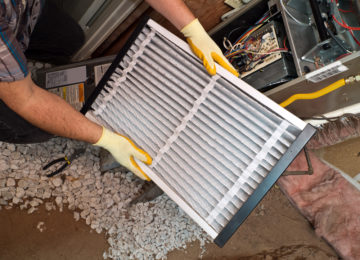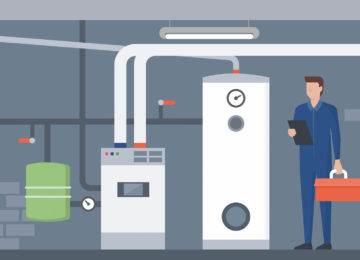Deep breath in; deep breath out. Who doesn’t love some good, fresh air? Increasing natural airflow throughout your home has a number of benefits for your health. But what are some ways you can do that? Well we dedicated this blog to 3 natural tips to increase the ventilation of air in your home creating a clear, vibrant atmosphere!
Natural airflow reduces excess moisture, prevents backdrafting and its associated risks, and minimizes the presence of allergens and volatile organic compounds.
If these reasons weren’t enough, research has consistently proven that getting more fresh air is beneficial to your mental and physical health. Don’t let the rising Atlanta temperatures discourage you from increasing ventilation in your home.
By following the natural tips in this post, you will be able to enjoy fresh air despite the rising temperatures by learning how to cool the air before it enters your home.
1. Incorporate Ground Coverings and Water Elements
A common explanation that people give about not wanting to allow outside air into the home is due to the heat. In order to be more inclined to ventilate your home naturally, incorporate ground coverings and water elements around your home to reduce temperatures of the air so it is a comfortable temperature in your home.
Ground coverings can be very effective at reducing the amount of heat around your home. Grass and other low heat-absorbing materials retain small amounts of heat, which helps to cool air around your home. Water elements are also very effective at cooling air before it flows into your home. Fountains, pools, ponds, and swimming pools are a few examples that can cool the air around your home to facilitate natural ventilation.
2. Plants, Trees and Other Foliage
One of the most effective methods for cooling the air around your home naturally is with the shade from trees and other foliage. Similarly to ground coverings and water elements, trees absorb much of the sun’s energy, which subsequently cools the air around your home.
Most types of trees and other foliage come with an added bonus of improving air quality. Research has proven that trees and other plants can improve the air quality both around and in your home. There are many types of plants that can improve indoor air quality. As long as you aren’t allergic to them, plants provide an excellent approach to cool and improve the quality of the air around your home.
3. Optimize the Use of Windows and Skylights
Opening windows and skylights is typically the first solution that people think of when they aim to increase ventilation in their homes naturally. After all, this is common sense, right? However, opening one window or even multiple windows in random locations throughout the home does very little in terms of improving ventilation.
In order to optimize airflow, it is important to open windows on both sides of your home, especially the side that is receiving the wind. As a general rule, the more open your home is, the more air will flow through it. Consider opening doors in order to improve the circulation of air. Operable skylights can also make a noticeable difference in airflow.
Keep It Natural with TemperaturePro®
Interested in improving the quality of the air in your home even more? Contact a TemperaturePro® professional to learn more about how we can help you to improve your indoor air quality.




